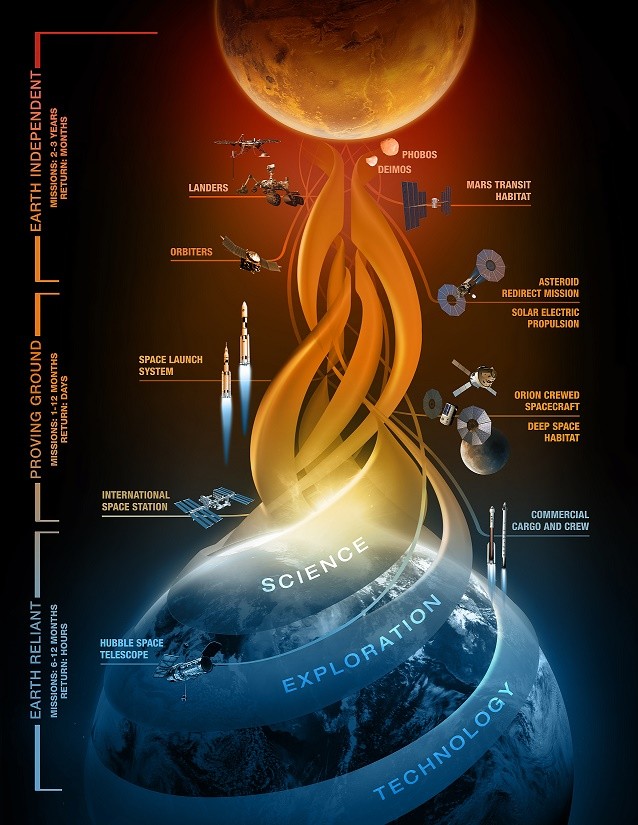From rovers to orbiting probes that are currently exploring Mars, NASA is already preparing to launch missions to Mars when the space agency announced a detailed three step plan for future manned space missions to the Red Planet.
In this report called NASA's Journey to Mars: Pioneering Next Steps in Space Exploration, the U.S. space agency will unveil three comprehensive primary thresholds that the agency will encounter upon the voyage to Mars. The thresholds signify the varying degrees of difficult challenges that humans will face as astronauts will venture farther from Earth.
According to NASA administrator, Charles Bolden, the space agency has already reached its closest efforts to deploying American astronauts to Mars where this Journey to Mars report can provide crucial details about how the space agency takes the necessary steps to achieve their goal of reaching and colonizing Mars.
Bolden also added that he is now looking forward to presenting this plan and discussing this outline to members of Congress along with NASA commercial partners and international partners as well, at the International Astronautical Congress that will occur next week.
NASA plans to manage these challenges of human spaceflight and colonization of Mars into three stages that will involve delivering different mission capabilities.
The first stage called Earth Reliant involves conducting extensive research aboard the International Space Station where scientists will carry out a myriad scientific tests on different technology involving microgravity that can benefit human performance and health when it comes to human spaceflight. Data will then be collected and applied to deep space missions.
The second stage known as Proving Ground involves NASA scientists to carry out another set of complex, technical stages in a deep space environment for astronauts to learn how to live and work in an alien world such as Mars. NASA will focus on cislunar space which is the space surrounding the moon for potential staging orbits for future deep space missions with the help of the Asteroid Redirect Mission.
The final Earth Independent third stage will involve consolidating all important data from the ISS and then executing manned missions to Mars and its moons, in Martian lower orbit or its lunar orbit and eventually on the surface of the Red Planet.
The space agency plans to send its first manned mission to Mars in the early 2030s with its Space Launch System and its Orion crewed spacecraft.






















